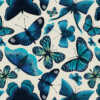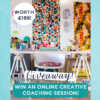
Today we are thrilled to bring you an inspiring and informative interview with Richard Bryan – a Yorkshire based product photographer. Today, Richard shares on his journey into professional product photography, how he developed his signature style, and offers up some brilliant tips and resources for capturing stunning, professional quality product imagery.
About Richard
I’m a creative product photographer working with brands, independent businesses and successful designer-makers. Working from my studio with clients all across the UK, helping clients tell their story and presenting their work and products in a professional light.
Using professional lighting techniques, I bring out textures, highlight special finishes, capture reflective products correctly, and other aspects that clients can find difficult to achieve.
Working from my own studio, clients are welcome to stay for the shoot, or simply drop their items off. In fact remote shoots are my most popular option, giving clients back their time to spend in their work.
I love the product and still-life genres, working with you to bring out the best in products through creative use of storytelling, styling and lighting.

Design by Amelia llangaratne
When did your interest in Photography first start and how did that come about?
I was first interested in graphic design, particularly typography and advertising. Later I became more and more interested in photography, starting with landscapes created by Ansel Adams to forms and natural objects by Edward Weston. Whilst studying graphic design I took an optional unit in photography, and purchased my first ‘real’ camera. This was traditional black and white photography and developing the images in the darkroom, which I absolutely loved. I haven’t looked back since!

Design by Antonia Woodgate
What steps did you take to get to where you are now as a photographer?
I’d had previous jobs where photography was part of the role, such as working for an e-commerce company, and an antiques auction house. The latter was great experience, I’d always had an appreciation of Early to Mid 20th Century design and this introduced me to a much wider range of this type of design. In both roles I really wanted to focus more upon the photography and take it further, but couldn’t do that as it wasn’t a priority for either company. It’s a bit of a dream now having my own business and being able to set my own goals and direction.
I studied for a combined degree in graphic design and photography. The degree was excellent in enabling idea creation, but the photography was very much concept based, as such it’s fair to say I’ve taught myself product photography since then.

Design by Jennifer Kellett
How would you describe your style?
To sum it up in one word, the word would be Naturalistic, I like to incorporate wood, marble and stone and to pick out textures, all using a subtle lighting style. To an extent the economy has become revolutionised by small scale makers, which is great, and to reflect this I enjoy incorporating older items that were made in the UK as props.
Sometimes I ‘root’ the product in a set that reflects the design, I’ve done this with designs inspired by the sea, and countryside…I always feel happiest when walking through local forests and beaches, and use found objects from these trips in my work.

Design by Jo Scott Art
What kind of photographer do you want to be / are you known as?
To be creative and imaginative with my work where possible. I like to handle the whole process rather than splitting it down into photographer and stylist roles, this may change in the future, but at the moment I really enjoy the styling part of the process. I enjoy working with small businesses and creatives, learning about their work and passions.
What are you working on currently?
Currently I’m working on developing my own style further and spending time experimenting a little with different lighting techniques and really putting the focus on my photography. I’ve spent a lot of time in the past few years building a stock of surface and background options, such as vintage and reclaimed wood and stone. I do also create a lot of simple product photographs for clients too, where it’s just about the work or product, and for this I have a large white sweep (other colours available too!)

Design by Karen Hadjitofi
What advice would you give emerging photographers or designers wanting to build their portfolios?
Start small, believe in yourself, keep on going and learning from what you’ve done. I believe that designers, and photographers need to avoid the temptation to keep on improving their photographic equipment. Sometimes you will need another lens, or a different camera but it’s worth taking some time to think about whether it’s really necessary.
What would be / what has been your dream photography gig?
Getting my clients work published is something that is important to me. Clients have had their work published in the Top Drawer Preview magazine, and also gardening magazines and countryside magazines. Continuing with this and getting into further larger mainstream style magazines would be great.
Looking ahead what are your major goals in your photography career?
To continue developing the studio, my style of work, and my technical skills. For me it’s mainly about the quality of the work, which I like to keep bettering! Although I’m the sort of person who’s never happy so this will go on forever!
Do you have any tips for our readers / students around taking photos of your own design work?
Take your time and make sure you prepare properly when photographing your work.
It’s tempting to make a quick decision about the image on the back of the camera. I know because I’ve been guilty of this in the past! It really does pay to be patient and view them on a larger screen, such as laptop, computer or tablet. It’s surprising how many issues can arise, such as something protruding into the scene, a distracting shadow running across your product. These really do get hidden by the small LCD screen on the back of the camera, as well as inaccurate colour depiction.
It’s also best to try and fix as many issues as you can during your shoot preparation. Try to avoid thinking…”I’ll fix that in post-production”. Whilst many things are possible in various software packages, at the very least this adds time, quite often it also reduces the quality of the end image. If something needs a little blu-tac or tape to hold it position, then fine, but if you can make it so you can’t see that, it’s going to save you quite a lot of time in post-production. Even if it adds time to the shoot it’s best to get it right now. That may sound obvious but if you’re dealing with multiple images, of say a complete range of products you can save yourself hours of work.
Any extra tips for those wanting to explore photography?
Professional photographers don’t just add quality equipment to a shoot, that’s an important part, but only a part. They add their own creativity, their experience, their problem solving abilities and can also save you a lot of time. It’s not about the camera as much as you would think.
On the other hand it’s not always possible for makers to get a shoot done, due to time or budget restraints. It’s not about the camera as much as you would think.
Find out more about Richard on his website and instagram.













